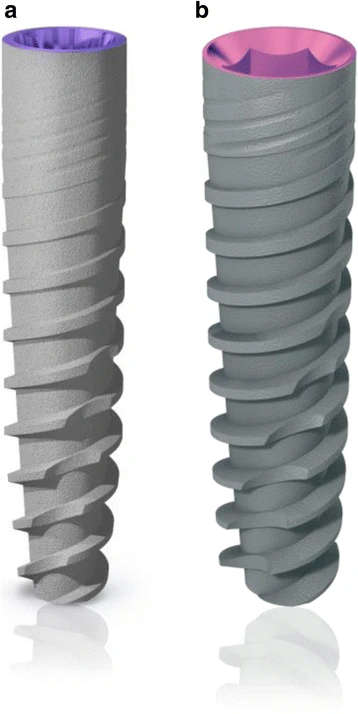Figure 1. Characteristics of the implants used in the study: a external macro-design of JDIcon Ultra S, 2.75 mm diameter implant and b external macro-design of JDEvolution S, 3.25 mm diameter implant
Figure 1. Characteristics of the implants used in the study
author: Tommaso Grandi,Luigi Svezia,Giovanni Grandi | publisher: drg. Andreas Tjandra, Sp. Perio, FISID

Serial posts:
- Narrow implants supporting a fixed splinted prostheses
- Background : Narrow implants supporting a fixed splinted prostheses
- Methods : Narrow implants supporting a fixed splinted prostheses (1)
- Methods : Narrow implants supporting a fixed splinted prostheses (2)
- Methods : Narrow implants supporting a fixed splinted prostheses (3)
- Results: Narrow implants supporting a fixed splinted prostheses
- Discussion: Narrow implants supporting a fixed splinted prostheses (1)
- Discussion: Narrow implants supporting a fixed splinted prostheses (2)
- References: Narrow implants supporting a fixed splinted prostheses
- Figure 1. Characteristics of the implants used in the study
- Table 1 Features of the subjects included in the study
- Table 2 Dimensions (diameter and length) and final seating torque of the inserted implants (n = 124)
- Table 4 Comparison of mean bone levels (means ± SD) at different follow-up intervals in different implants diameters groups (2.75 and 3.25 mm)
- Figure 2. Case 1: Example of one case involved in the study. a Preoperative view of a partial edentulism in posterior mandible. b Preoperative CT scan. The width of the ridge was 4 mm. c Four narrow diameter implants were placed and left to a nonsubmerged healing. d Baseline periapical radiograph. e Buccal vieew of the final metal ceramic restoration. f Periapical radiograph at 1 year after loading
- Figure 3. Example of another case involved in the study